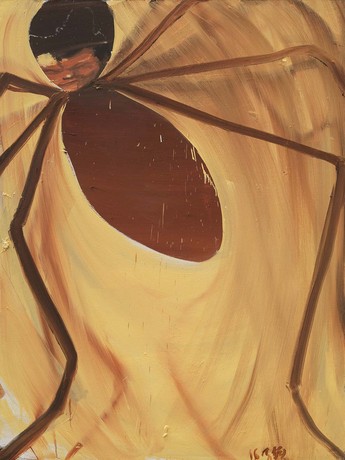-
From Current Issue
-
- Editor’s Letter Fire in the Heart
- Reviews I Gusti Ayu Kadek Murniasih
- Reviews 11th Seoul Mediacity Biennale: “One Escape at a Time”
- Dispatch Networked China
- One on One Monira Al Qadiri on Yukio Mishima
- Essays The rise of independent art spaces in pandemic-era Shanghai
- Features Tuan Andrew Nguyen
- Table of Contents
- Web Exclusives
- Archive
- Subscribe

R
E
V N
E
X
T
“Unbounded” was a collective show that introduced audiences in the Italian city of Mantua to the work of ten contemporary Chinese artists born between the 1950s and the late ’80s, including Fang Lijun, Li Changlong, Cai Lei and others. The show was hosted in Mantua’s Casa del Mantegna, once the residence of the Italian Renaissance painter Andrea Mantegna. The title “Unbounded” was inspired by the distinct architecture of the historical house, built in 1476 around an unusual circular courtyard. Interpreting the circle as a symbol of boundless cycles, curators Zhu Tong and Eleonora Battiston proposed that China’s uninterrupted dialogue with its cultural roots defines its contemporary art.
The broad curatorial proposition that contemporary art in China draws from its artistic past, was best reflected in the presentation of work by artists born in the 1950s and ’60s, including Fang Lijun and Zhou Chunya. One of the leading figures of the Cynical Realist movement, Fang trained as a Social Realist painter, later developing a style that cross-pollinates references to pop culture with folk art. In his large-scale prints, Fang recovers the ancient practice of woodblock printing, a complex and painstaking process that requires carving and assembling multiple plates, which are then used separately during printing. On show were two of these colorful prints—2014 (2014) and 2016 (2016) featuring clusters of his signature thick-featured, bald, grinning character, whose repetition conjures Maoist propaganda, as much as it lampoons personal alienation in a consumerist and individualist society under capitalist-driven socialism.
Chinese visual references are perhaps not an immediately recognizable aspect of Zhou Chunya’s painting style. After graduating from the Sichuan Academy of Fine Arts, Zhou moved to Kassel, Germany, for further studies, and became acquainted with German Neo-Expressionism, which heavily influenced his style of painting. Zhou became well known to international audiences in the 1990s for his iconic “Green Dog” series, which portrayed a green German Shepard, modeled after the artist’s deceased beloved pet, in a number of settings and poses. Zhou’s painting I’m a Gentle Lamb (2006) features a bright pink male nude in an awkward prone position, rendered with loose, sweeping brushstrokes in drippy pink paint, set against a blank white background. The sparse space in which the figure appeared to float recalled the emptiness of portraits found in Chinese handscrolls.
Most of the paintings showcased in “Unbounded,” particularly those by artists born after the 1970s, formed an eclectic archipelago of styles and individual visions drawing from disparate cultural references. For instance, Chen Ke’s paintings featuring a round–nosed, brooding little girl layered over uncanny, fragmented landscapes combined Japanese and Korean cartoon aesthetics with a Surrealist-inspired language of dreams, personal mythology and metaphors. Just as cryptic, even nightmarish, were Ma Ke’s disquieting canvases featuring gargantuan spiders with long spindly legs and Baconesque faces, whose naïve style recalled New York’s “Bad” paintings of the 1970s.
By contrast, Bian Qing’s abstract painting Lesser Cold (2011) created a contemplative space through an emotional use of color, featuring barely outlined, delicate shapes in gray and blue on a creamy background, recalling shapes of islands or continents with the gracefulness of traditional Chinese landscape painting.
In the same room, Cai Lei’s In Ambiguous Sight No. 7 (2015) featured an architectural setting—a passageway—in ecru monochrome, where a marked illusion of depth was created by means of geometric perspective and chiaroscuro effects. On approaching the piece, one became aware of the deception: what looked like a flat surface was in fact a rectangular, three-dimensional shaped support on which a raw canvas had been glued, and the illusion of perspective was created by the play of natural light on the molded support. Cai explores the relationship between real and illusory space, blurring boundaries between painting and sculpture.
The artists featured in “Unbounded” are attuned to the globalized art world, in which their contemporaries from different corners of the world often share visual languages and similar themes. Perhaps, the most noticeable common feature, particularly in works by the younger artists presented at the show, was the absence of a critical edge, which no longer seems for these artists to be a priority, or even a viable option.
“Unbounded” is on view at Casa del Mantegna, Mantua, until May 1, 2017.
To read more of ArtAsiaPacific’s articles, visit our Digital Library.






